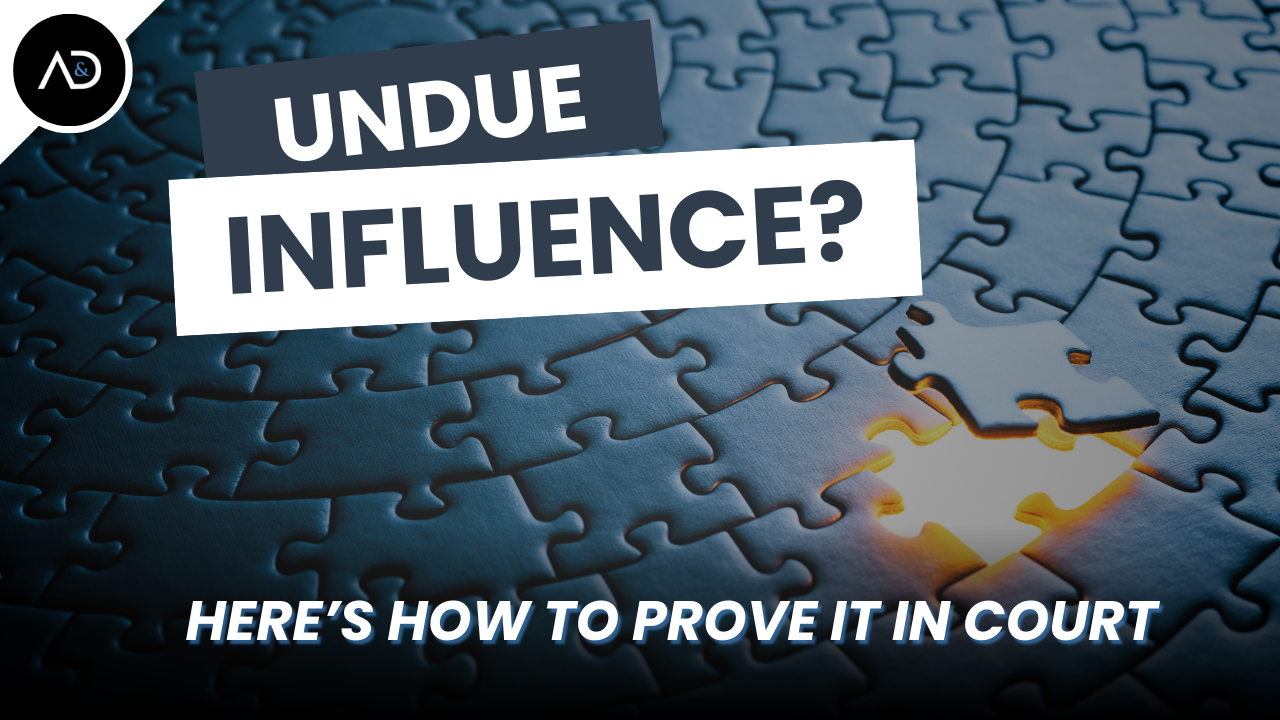
Proving undue influence in court is never easy. These cases often arise after someone has passed away, leaving behind a trust or trust amendment that seems suspicious or out of character. By then, the victim is no longer alive to explain their intentions, and those who benefited from the changes are unlikely to admit they influenced the decedent. So how do you build a winning case?
Undue Influence Relies on Circumstantial Evidence
Direct evidence of undue influence is extremely rare. Most cases rely on circumstantial evidence—facts and circumstances that, when considered together, paint a picture of manipulation.
Imagine this scenario: An elderly person with a history of mild to moderate dementia creates a trust 20 years ago, dividing everything equally among their four children. Over the years, they update the trust several times, but the distribution remains the same. Then, just three months before their death—when they’re bedridden with cancer—a new attorney appears, drafts an amendment, and suddenly three children are disinherited.

Did the decedent truly intend to make such a drastic change? Or is there something suspicious at play?
Key Areas of Evidence in Undue Influence Cases
To succeed in an undue influence case, you need to gather as much admissible evidence as possible. Here are the key areas to investigate:
-
Medical Records
Start by reviewing the decedent’s medical history. What diagnoses did they have at the time of the trust change? Dementia, cognitive impairment, or other neurological conditions can significantly impact someone’s ability to make independent decisions. Hiring a medical expert to evaluate the decedent’s mental state at the relevant time can be crucial.
-
Percipient Witnesses
These are people who had direct contact with the decedent around the time the trust was changed—friends, caregivers, or extended family. Did the decedent mention wanting to change the trust? Did they seem confused or easily manipulated? Firsthand observations can help the court understand what was really going on.
-
The Attorney Who Drafted the Amendment
Was the attorney someone the decedent had worked with for years—or someone new brought in by a beneficiary? Who contacted the attorney to set up the meeting? Where did the meeting take place, and who was present? If the attorney had ties to the person who benefited from the change, that’s a major red flag.
Putting the Puzzle Together
Winning an undue influence case isn’t about finding one “smoking gun” piece of evidence. Instead, it’s about putting together a compelling picture using many small pieces: medical records, witness testimony, attorney involvement, and the timing and context of the trust changes.

The more high-quality, admissible evidence you can gather, the stronger your case will be. While no one can guarantee a win, careful investigation and skilled legal strategy can tip the scales in your favor.
Conclusion
Undue influence cases are complex, emotionally charged, and highly fact-specific. If you suspect a loved one was manipulated into changing their trust, don’t wait. See if you qualify for a free consult with our probate litigation attorneys who understand how to build these cases, piece by piece, until the full picture comes into focus.

